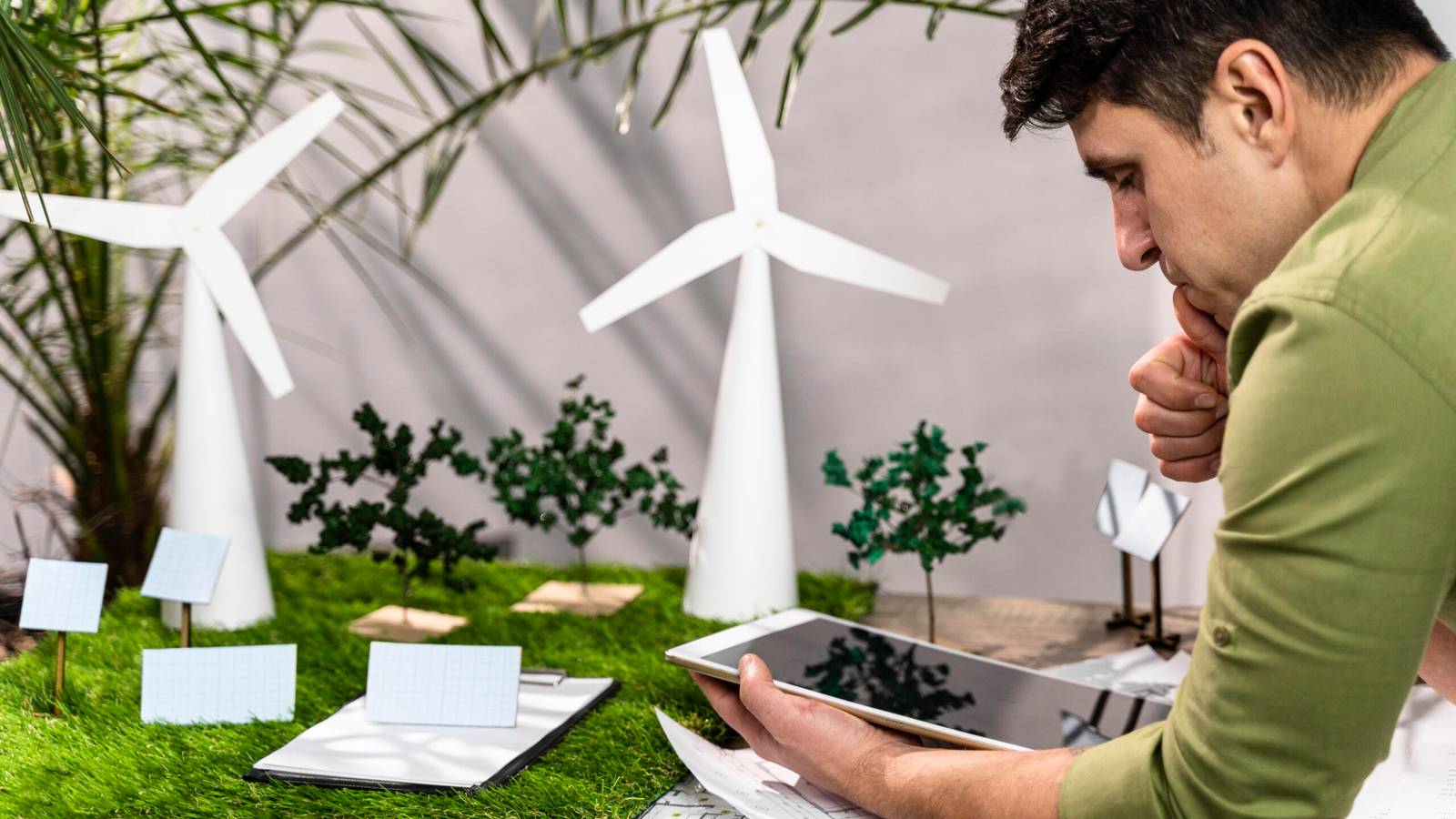Sustainable Power: Renewable Energy Tech

by Web Digital
In an era marked by environmental challenges and concerns about the depletion of finite fossil fuel reserves, the quest for sustainable energy sources has become paramount. Renewable energy technologies have emerged as a beacon of hope, offering a pathway to cleaner, more sustainable power generation. This article explores the world of renewable energy technology, delving into the various sources and innovations that are driving the shift towards a greener and more sustainable energy landscape.
The Imperative for Renewable Energy
The need for renewable energy has never been more urgent. The combustion of fossil fuels for electricity and transportation has been a primary driver of climate change, leading to rising global temperatures, extreme weather events, and environmental degradation. Additionally, the finite nature of fossil fuel reserves means that their depletion is inevitable, making the transition to renewable energy sources not only an environmental imperative but also an economic necessity.
Renewable energy technologies offer a promising solution to these challenges. They harness energy from sources that are naturally replenished, such as sunlight, wind, water, and geothermal heat. Unlike fossil fuels, these sources are virtually inexhaustible and produce little to no greenhouse gas emissions, making them a sustainable and environmentally friendly alternative.
Key Renewable Energy Sources
Solar Power: Solar energy is one of the most abundant and accessible renewable energy sources. Photovoltaic (PV) cells, commonly known as solar panels, convert sunlight into electricity. Solar power can be harnessed for residential, commercial, and industrial use, as well as in large-scale solar farms.
Wind Power: Wind turbines capture the kinetic energy of moving air to generate electricity. Wind farms, often located in windy regions or offshore, can produce significant amounts of clean energy. Advances in turbine technology have made wind power increasingly cost-effective.
Hydropower: Hydropower harnesses the energy of flowing water to generate electricity. It is one of the oldest and most widely used forms of renewable energy, with applications ranging from large dams and hydroelectric power plants to small-scale micro-hydro systems.
Geothermal Energy: Geothermal power taps into the Earth’s internal heat by utilizing steam or hot water from geothermal reservoirs. This energy source is particularly abundant in regions with geothermal activity, such as geysers and hot springs.
Biomass: Biomass energy derives from organic materials, including wood, crop residues, and municipal solid waste. These materials can be burned directly for heat or converted into biofuels like bioethanol and biodiesel for electricity and transportation.
Renewable Energy Technologies in Action
Solar Photovoltaics (PV): Solar panels have become increasingly affordable and efficient. They can be installed on rooftops, in solar farms, and even integrated into building materials. The growth of solar PV has been remarkable, with many countries incentivizing residential and commercial solar installations.
Wind Turbines: Modern wind turbines are capable of producing large amounts of electricity. Offshore wind farms are becoming more prevalent due to their proximity to major population centers and the consistent wind patterns over the ocean.
Hydroelectric Power: Large hydropower projects, such as the Hoover Dam in the United States and the Three Gorges Dam in China, provide substantial electricity to regions. Small-scale hydro systems are also being deployed in remote areas and communities.
Geothermal Power Plants: Geothermal power plants are often located in geologically active regions. Iceland, for example, derives a significant portion of its electricity from geothermal sources. Enhanced geothermal systems (EGS) are being developed to expand geothermal energy’s reach.
Bioenergy: Biomass is used for heating, electricity generation, and biofuel production. Advanced biofuels, produced from non-food crops and agricultural waste, are being researched and developed to reduce the environmental impact of bioenergy.
Advancements in Renewable Energy Tech
Energy Storage: One of the key challenges of renewable energy sources like solar and wind is their intermittency. Energy storage technologies, such as advanced batteries and pumped hydro storage, are improving energy grid stability by storing excess energy for use during periods of low renewable energy generation.
Grid Integration: Smart grid technologies enable more efficient integration of renewable energy into existing power grids. This allows for better management of electricity supply and demand, reducing wastage and improving overall grid reliability.
Next-Generation Solar: Researchers are working on innovative solar technologies, such as perovskite solar cells, that promise higher efficiency and lower production costs than traditional silicon-based solar panels.
Wind Turbine Advancements: Wind turbines continue to evolve, with larger, more efficient designs and improved materials. Additionally, vertical-axis wind turbines are gaining attention for their potential to generate energy in a wider range of wind conditions.
Geothermal Innovations: Enhanced geothermal systems (EGS) are being developed to tap into geothermal energy reservoirs that were previously inaccessible. This technology has the potential to expand the reach of geothermal power.
Benefits of Renewable Energy Technologies
The adoption of renewable energy technologies offers a plethora of benefits:
Environmental Sustainability: Renewable energy sources produce little to no greenhouse gas emissions, helping to combat climate change and reduce air pollution. They also have a lower environmental footprint compared to fossil fuels.
Energy Security: Unlike fossil fuels, renewable energy sources are not subject to the volatility of global energy markets or geopolitical conflicts. This enhances energy security and reduces dependence on foreign oil and gas.
Job Creation: The renewable energy sector has seen significant job growth in recent years, with opportunities in manufacturing, installation, maintenance, and research and development.
Economic Growth: Investing in renewable energy technologies stimulates local economies by creating jobs, attracting investment, and reducing energy costs for businesses and households.
Energy Access: In remote and underserved areas, renewable energy technologies provide a reliable source of electricity, improving living standards and economic opportunities for communities.
Conclusion
Renewable energy technologies represent a beacon of hope in the quest for a sustainable and clean energy future. They offer a viable solution to the environmental challenges posed by fossil fuels while also driving economic growth, job creation, and energy access. As technology continues to advance, the integration of renewable energy into our energy mix will become increasingly seamless and affordable.
Recommended Posts

Exploring Innovative Technologies in Ajax Digital Marketing
November 23, 2024


